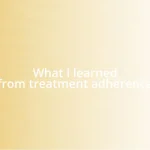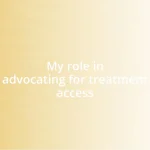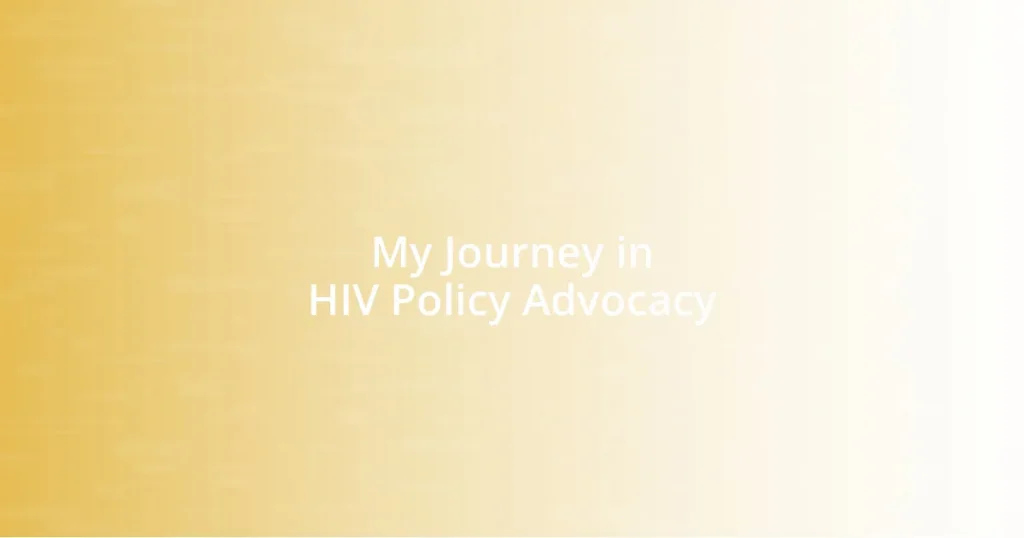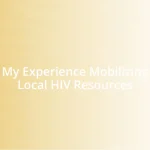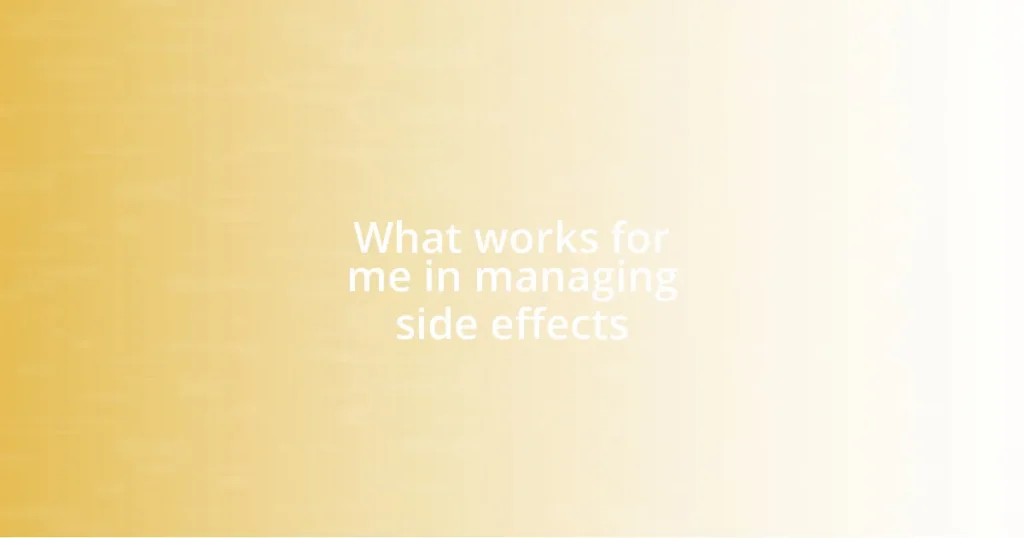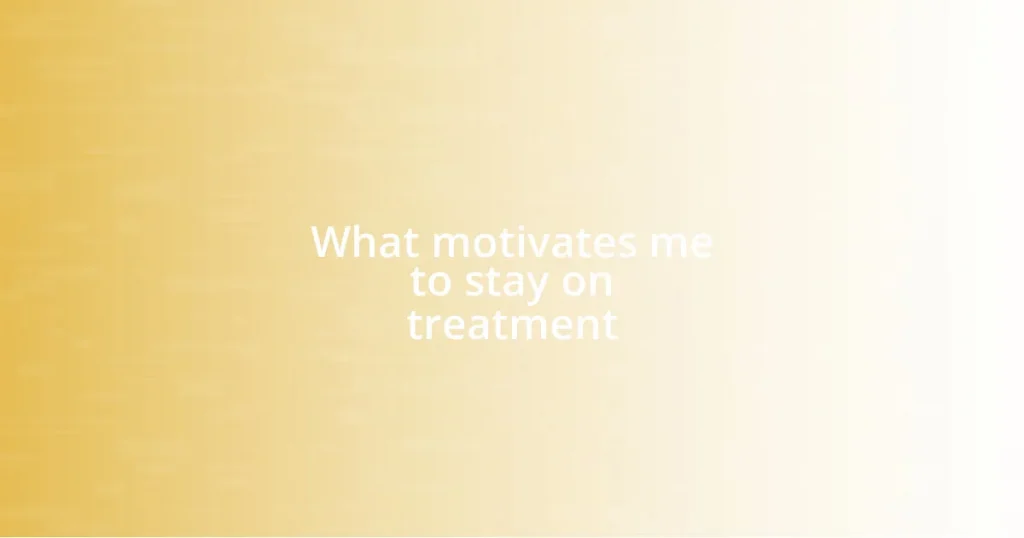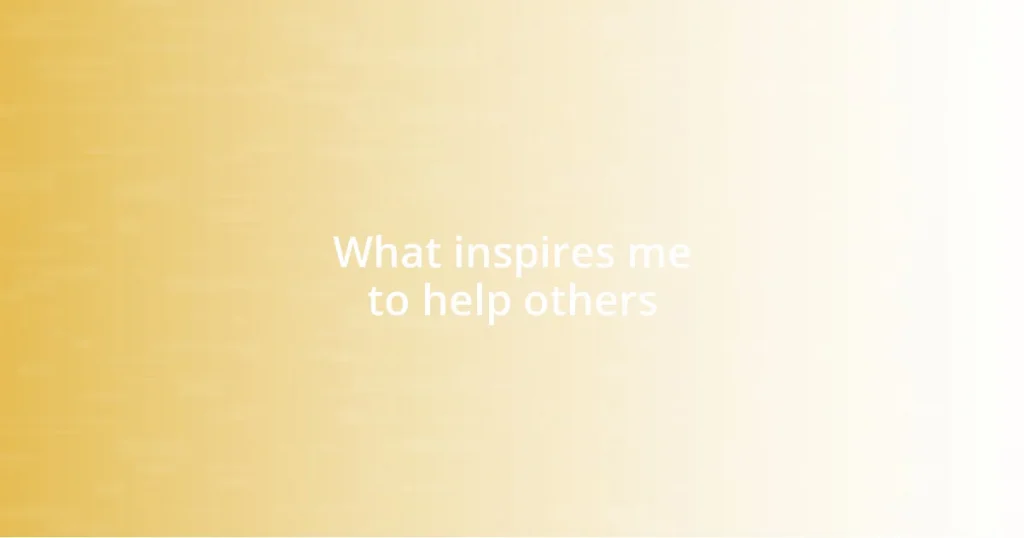Key takeaways:
- Attended a national advocacy conference, igniting a passion for collective change in HIV policy.
- Advocated for HIV education inclusion in local school curriculums to combat stigma from an early age.
- Learned the power of personal storytelling in communicating the human impact of HIV during a town hall meeting.
- Emphasized the importance of building collaborations and partnerships to enhance advocacy efforts.

Understanding HIV Policy Advocacy
HIV policy advocacy is a critical process that drives change, shaping laws and policies to improve the lives of those affected by HIV. I remember attending my first advocacy meeting and feeling an overwhelming mix of hope and urgency as I listened to stories that resonated deeply with my own experience. How can we remain silent when every voice matters in the fight against stigma and discrimination?
Engaging with policymakers requires a blend of passion and strategy. When I first reached out to my local representatives, I was nervous—after all, I was just one person among many. But as I shared my story, I found that personal narratives humanize data and statistics, making them more relatable and compelling. Have you ever wondered how a single conversation can shift someone’s perspective on such a crucial issue?
At its core, HIV policy advocacy is about ensuring equitable access to care and treatment. It’s heartbreaking to see how many people still face barriers due to lack of awareness or support. I often reflect on the times I’ve witnessed lives transformed through advocacy efforts. Isn’t it empowering to realize that together, we can influence policies that pave the way for a better future?

Personal Motivations for Advocacy
My own motivations for engaging in HIV policy advocacy stem largely from personal experiences with stigma. One moment stands out vividly: I was at a community gathering when a person shared their story of rejection from their own family due to their diagnosis. Hearing that raw emotion struck a chord with me. It made me realize that the fight against stigma isn’t just political; it’s deeply personal and affects the very fabric of our lives.
Additionally, the transformative power of awareness fuels my passion for advocacy. I remember sitting in a workshop where a healthcare professional explained the latest advancements in treatment. There was a palpable shift in the room as everyone began to understand that HIV is no longer a death sentence but a manageable health condition. That knowledge emphasized for me the importance of informing and empowering our communities, driving me to spread awareness through every platform available.
A final, deeply rooted motivation for me is the desire to create a legacy of compassion. When I think about the individuals who came before me, advocating tirelessly for change, I feel compelled to honor their struggles. It inspires me to act with urgency, knowing that every step forward in policy can pave the way for those who will come after us. How can I not advocate when I stand on the shoulders of giants who fought for the rights and dignity of people living with HIV?
| Motivation | Description |
|---|---|
| Stigma Awareness | Personal experiences with stigma drive my passion for advocacy, amplifying the need for change. |
| Empowerment through Information | Transformative moments when communities learn about treatment possibilities reaffirm the importance of awareness. |
| Creating a Legacy | A desire to honor the past advocates motivates me to push for compassionate policies for future generations. |

Key Milestones in My Journey
The journey of becoming an advocate for HIV policy has been marked by several pivotal moments that shaped my outlook. One such milestone occurred when I attended a national advocacy conference for the first time. As I stepped into that vast hall filled with passionate individuals, I felt a surge of energy and a profound sense of belonging. It hit me that I was part of a larger movement—one that could influence policies at a national level. This experience ignited a fire within me to fight the fight—not just for myself, but for every person affected by HIV.
- Participated in my first national advocacy conference, connecting with others and understanding the collective power of our voices.
- Initiated a community forum, allowing vulnerable voices to be heard and shared, fostering a sense of unity and purpose.
- Successfully lobbied for the inclusion of HIV education in local school curriculums, realizing the critical role early education plays in reducing stigma.
In another significant moment, I was invited to speak at a local town hall meeting. My hands trembled as I approached the microphone, but when I saw the faces of people nodding in recognition, every bit of anxiety melted away. I shared my story and the stories of those impacted by HIV—stories that often remain hidden but are filled with resilience and hope. That night, I understood that storytelling is a powerful tool in advocacy. It can break barriers and change hearts, revealing the human side of the statistics.

Building Collaborations and Partnerships
Building strong collaborations and partnerships has been a cornerstone of my advocacy journey. I remember attending a local organization meeting where different stakeholders gathered to brainstorm solutions. The discussions flowed easily, and I felt the power of diverse voices coming together for a common cause. It struck me that no single organization can tackle the complexity of HIV on its own; partnerships amplify our reach and impact.
Each collaboration I’ve undertaken has taught me invaluable lessons about trust and shared responsibility. For instance, when I collaborated with local health providers, we created a workshop focused on reducing stigma around HIV. Real stories were shared, and I saw firsthand how open communication could transform perceptions. It made me reflect: what if more organizations prioritized collaborative efforts? Imagine the collective strength we could wield in advocating for policy change!
I also deeply value the connections made through personal relationships in advocacy. One partnership stood out when I teamed up with a former legislator. The synergy we created was electric. As we shared our experiences, it was clear that our combined narratives brought a unique perspective to policymakers. I often ask myself, how do we effectively leverage these personal connections to foster more robust advocacy efforts? It’s clear to me that nurturing relationships isn’t just beneficial; it’s essential for sustainable change.

Effective Communication Strategies
Effective communication in HIV policy advocacy is about more than just facts; it’s about connecting with people on a human level. I learned this during a community workshop where I held a Q&A session. When I opened the floor to questions, I was surprised to see a mixture of fear and curiosity in the audience. By sharing my personal journey and addressing their inquiries candidly, I fostered an environment of trust. This experience made me realize that vulnerability can be a powerful catalyst for open dialogue.
Another key strategy is tailoring your message to different audiences. I remember preparing a presentation for a group of healthcare professionals. Instead of focusing solely on statistics, I highlighted personal stories of patients I knew. It was eye-opening to witness how shifting the narrative transformed their perspective. Whether you’re speaking to policymakers, healthcare providers, or community members, one must always consider their existing knowledge and emotional landscape. What resonates with one group may fall flat with another, and adapting communication styles is essential for impactful advocacy.
Additionally, consistency in messaging is crucial. When I embarked on educating schools about HIV education, I made sure that every piece of material reflected the same fundamental values: education, compassion, and empowerment. This collective voice not only helped in gaining support but also established credibility among educators and parents alike. Have you ever thought about how your consistency builds trust? I truly believe that when we communicate our message thoughtfully and consistently, we lay the groundwork for a stronger, united front in advocating for policy change.

Navigating Challenges in Advocacy
Navigating the challenges in advocacy has often felt like navigating a maze. I recall a specific moment during a campaign where we faced significant pushback from local policymakers resistant to change. It was disheartening to see how misinformation could shape perceptions, but it also ignited a fire within me to clarify doubts and educate. How many lives could be improved if we simply made the effort to inform? This question motivated my team and me to refine our strategies, emphasizing the importance of clear and consistent messaging.
However, the emotional toll of persistent advocacy can be heavy. I vividly remember a time when I poured my heart into organizing a community forum, only to witness a sparse turnout. It felt like a personal failure, but upon reflection, I realized these moments serve as necessary lessons in resilience. Resilience often proves to be our most valuable asset when setbacks occur. I now embrace each challenge as an opportunity to rethink our approach and galvanize support in more effective ways. Have you ever felt defeated by the scale of the task at hand? I’ve learned that it’s okay to feel that way, but it’s crucial to channel that energy into building stronger, more engaging outreach efforts.
Moreover, navigating complexities requires adaptability. During a recent advocacy event, I had to pivot my message last minute when new legislative issues arose. Though it felt daunting, I quickly adjusted my speech to address these evolving topics, reinforcing the importance of being up-to-date. I realized that staying flexible not only relates to our outward messaging but also impacts internal team dynamics. When we are open to change, we nurture an environment where innovative ideas can flourish, leading us to more effective advocacy. How often do we allow ourselves the grace to adapt and grow? In my experience, embracing change is essential for overcoming challenges in advocacy work.

Measuring Impact and Success
Measuring the impact and success of advocacy work can be a complex task, but I’ve found it essential to approach it with clear metrics. During a campaign aimed at increasing testing awareness, we collected data on the number of people tested before and after our outreach efforts. The smiles on people’s faces when they shared that they had gotten tested for the first time provided an unquantifiable sense of fulfillment. But the numbers—showing a 30% increase—reinforced that our efforts were truly making a difference.
One method I’ve often used involves gathering feedback from the community. After hosting a series of workshops, I created simple feedback forms, asking participants how these sessions had influenced their perceptions of HIV. Reading their heartfelt comments, some expressing newfound understanding or even gratitude, transformed data into personal stories. See, these qualitative insights may not always show up on a graph, but they paint a vivid picture of human connection that numbers alone can’t capture. Have you ever read feedback that made you realize the impact you’ve had? It’s a reminder that, although metrics are important, emotional resonance often signals deeper success.
Impact measurement also extends to our relationships with policymakers. I recall a significant meeting where we shared our advocacy outcomes directly with local officials. We presented both statistics and poignant narratives from community members whose lives had changed due to our work. Some officials were visibly moved, and the look of recognition in their eyes told me they finally understood the urgency of our cause. This blend of hard data and human experience solidified our message and opened doors for future collaborations. Isn’t it incredible how weaving personal stories into advocacy can elevate our impact and strengthen our calls to action?



